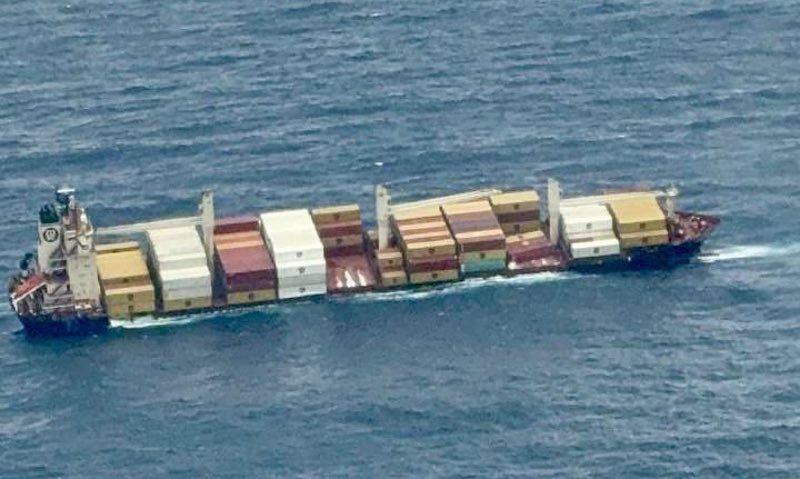A captain’s decision to leave the wheelhouse unattended while transiting the St. Marys River on autopilot led to the grounding and sinking of a fishing vessel, the National Transportation Safety Board said Tuesday.
On June 9, 2021, the F/V Sage Catherine Lane was transiting outbound on the St. Marys River when the vessel grounded on the north jetty of the St. Marys Entrance channel, south of Cumberland Island, Georgia. After the Sage Catherine Lane began to flood, the three-person crew abandoned the vessel and were rescued by a nearby Good Samaritan vessel.
The vessel later sank with about 2,300 gallons of fuel, engine oil and hydraulic oil on board. A crewmember sustained a minor injury and the vessel was declared a total loss at $1 million.
The NTSB detailed its finding in Marine Investigation Report 22/14 released Tuesday.
According to the report, the vessel was transiting outbound, the captain set the vessel’s autopilot to maintain the vessel’s heading out of the inlet. He answered a phone call and left the wheelhouse, but shortly after, the captain felt the vessel turn abruptly to port.
Returning to the wheelhouse, he attempted to turn away from the jetty, but the Sage Catherine Lane struck the jetty and grounded. The vessel broke later apart and sank following a thunderstorm three days after the grounding.
The investigation found that two days before the grounding, the captain was unable to disengage the autopilot and gain control of the helm as the vessel was proceeding into St. Augustine. The captain examined the autopilot system and found problems with the rudder angle indicator and rudder angle sensor at the rudder post and he took actions to correct the issues. That NTSB said that while the repairs worked initially, the vessel’s sharp turn to port indicated the system failed and the repairs were not effective.
“Leaving the wheelhouse unattended is imprudent, especially when navigating areas like the St. Marys Entrance, which included a narrow navigation channel, two jetties and vessel traffic,” the report said. “Had the captain stayed in the wheelhouse after engaging the autopilot, he would have been able to respond and take control of the vessel after the autopilot system failed and caused the rudder to turn to port.”
The NTSB determined the probable cause of the grounding of the Sage Catherine Lane was the captain’s decision to leave the wheelhouse unattended as the vessel transited the St. Marys Entrance on autopilot, leaving insufficient time to respond when the autopilot failed and caused the vessel to go off the set course.
“Autopilot use does not relieve the operator of responsibility to conduct a proper navigation watch. Use of autopilot should not be a justification for an operator to leave the wheelhouse or bridge unattended in confined waters,” the report said. “Navigating in channels and harbors requires quicker reaction times due to traffic, currents encountered, and frequent course changes, and more rudder due to slower speeds. Therefore, autopilot use is often discouraged or prohibited in a harbor entrance or narrow channel.”
Marine Investigation Report 22/14 can be found on the NTSB website.

 Join The Club
Join The Club











